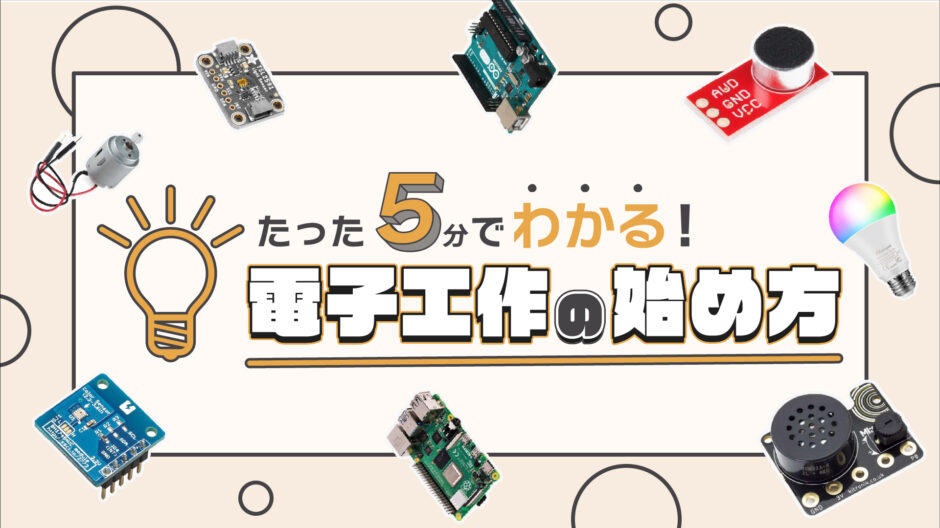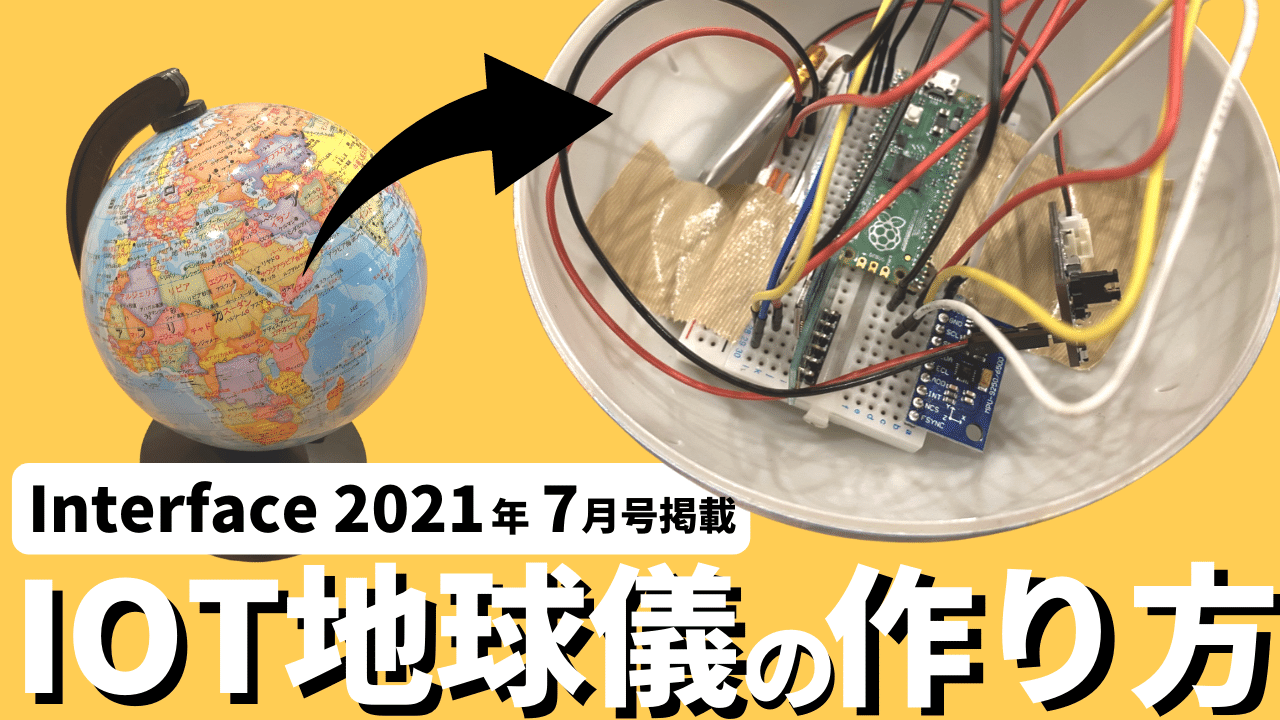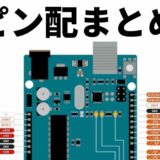YouTube
0:00 Opening
0:14 What is electronics?
1:34 What you need for electronics
2:54 Knowledge needed in electronics
4:08 First things first.
4:54 Summary
How to get started with electronics in 5 minutes


In this issue, we would like to introduce how to get started with electronics for those who are interested in electronics but do not know where to start.
We have tried to keep it as short and compact as possible, so whether you have never done any electronics work before or have been frustrated by it, we encourage you to watch to the end.
What is Electronics
First, let’s look around at the electronic devices around us to understand what electronics is all about.
For example, we have smartphones, AI speakers, cleaning robots, etc.
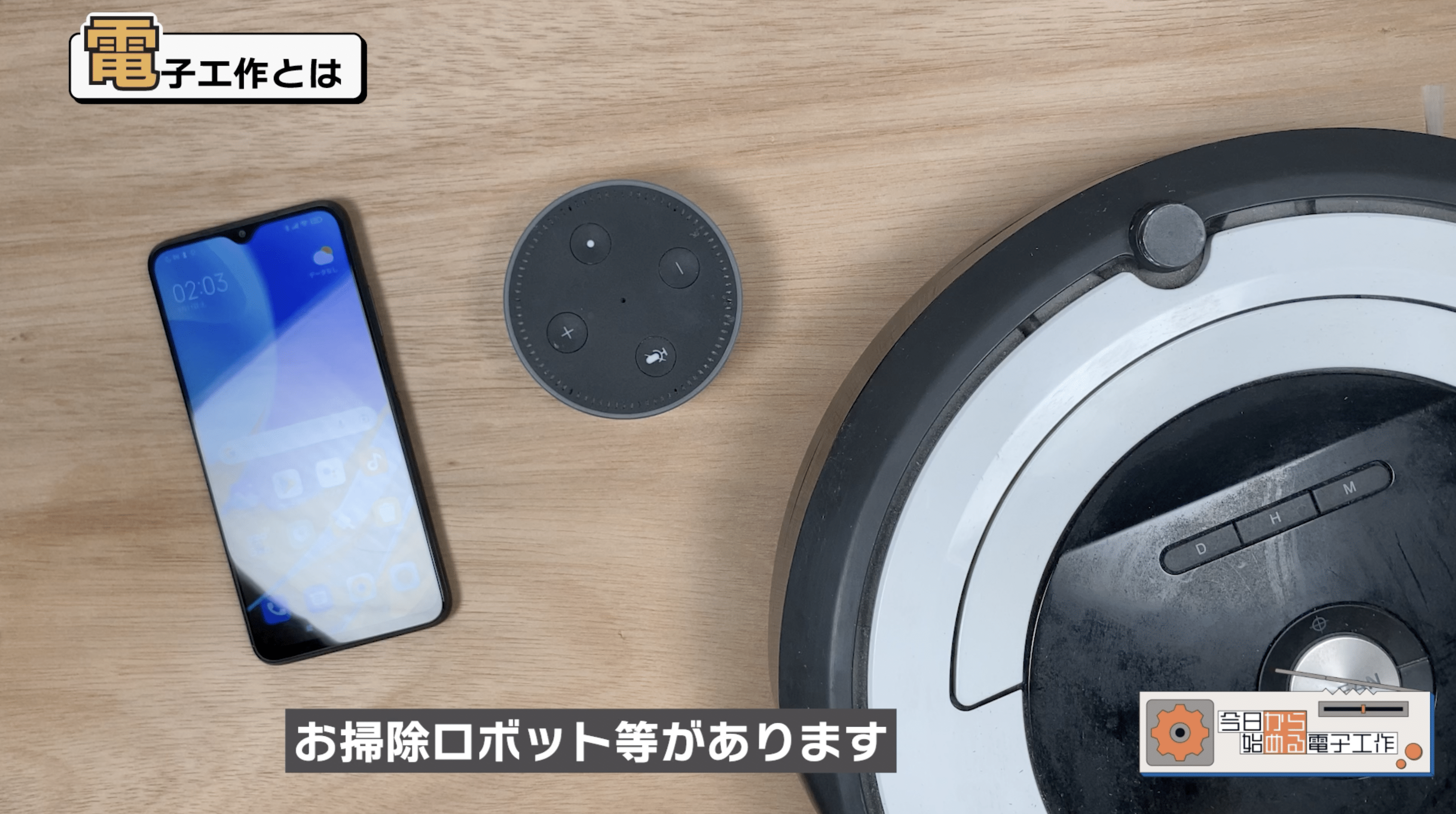
These may appear to be completely different things at first glance, but in fact, from a broader perspective, what they are doing is exactly the same.
For example, in the case of this AI speaker, when a voice is input by the microphone, the content of the voice is analyzed to calculate the next action, and a response or music is output by the speaker, thereby realizing human communication.
To explain this at a conceptual level, it means that information is input and the calculated results are communicated to the output to achieve some objective.
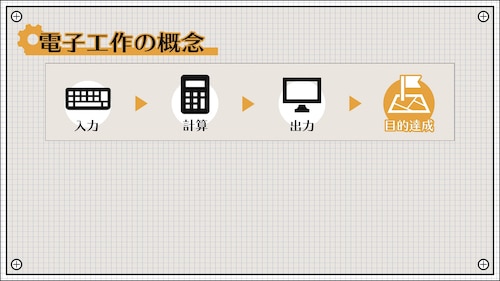
This flow of input, calculation, and output is a common characteristic of any device, including the three electronic devices listed here, and the basic form of electronic construction is to create this flow.
I think the fun of electronics is in figuring out how to combine the countless means of input, calculation, and output in the world and how to realize what I want to do.
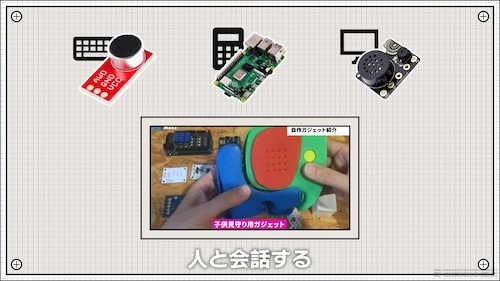
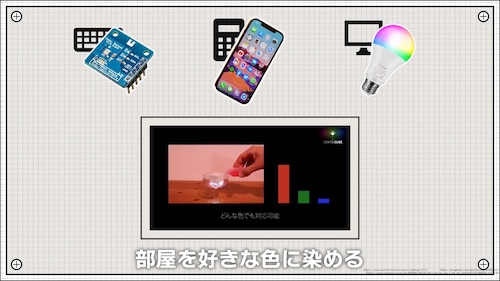
The more you research, the more you will encounter interesting components and devices in the world, and you will never run out of things to be interested in and enjoy.
I believe that once you have tasted this pleasure, as I have, you will not be able to get out of it. These are my thoughts on electronics.
What you need for electronics
Now that you have an idea of what you need for electronics work, we will now introduce the specific items you will need for electronics work.
- input device
- Computing Devices
- output device
As I mentioned earlier, electronics work consists of three steps: input, calculation, and output, so it will be easier to understand what is needed if you think in accordance with these steps.
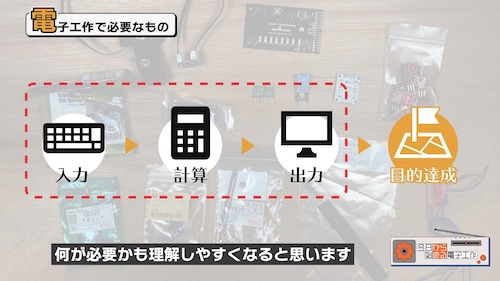
First of all, the input is to acquire information from the world by some means, so let’s prepare components that are generally called sensors, such as ultrasonic sensors and humidity sensors.
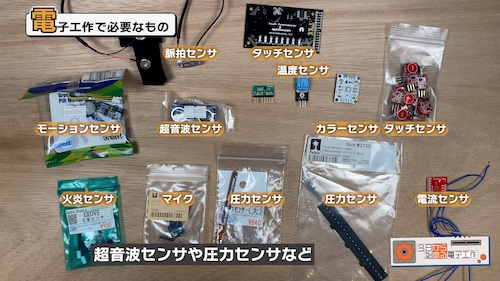
There is a huge variety of sensors in the world, and just looking at them is inspiring.
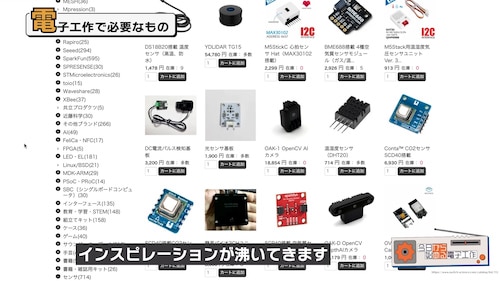
The part that does the computing is also called a microcontroller, microcontroller board, CPU, etc. Arduino, Raspberry Pi, etc. are well-known in the world of electronic construction.
Also, in fact, a smartphone can be used as a microcontroller board.
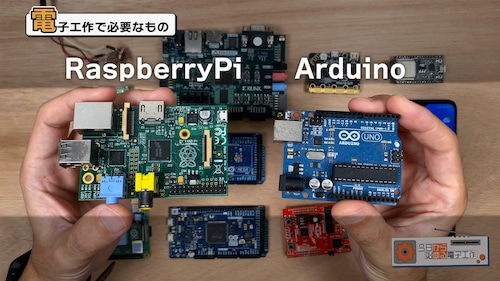
Depending on the application, the output may be an LCD or OLED display for displaying something, a motor for moving something, or a speaker for sound.
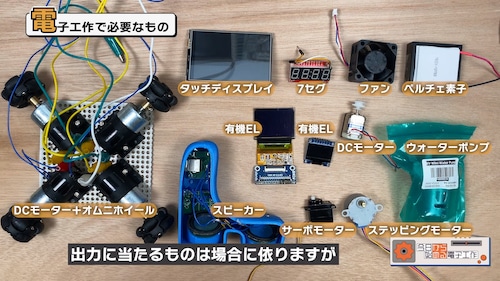
Then, since signals need to be transmitted between these components, cables, breadboards for wiring, etc. are required.
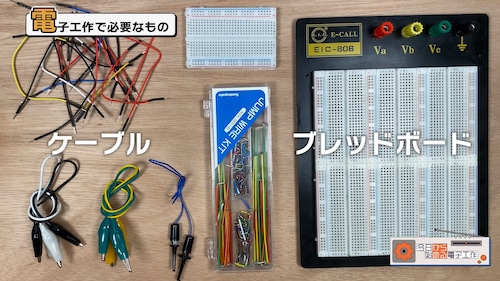
So far, these are the essentials, and after that, you will be able to work more comfortably with electronics if you have these measuring instruments and tools.
I will be introducing these in another video.
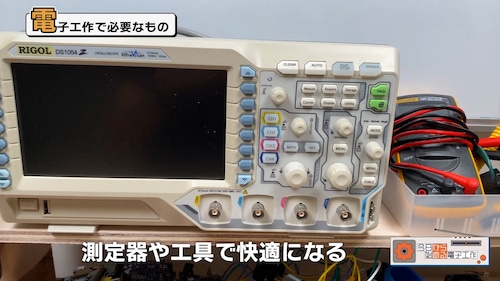
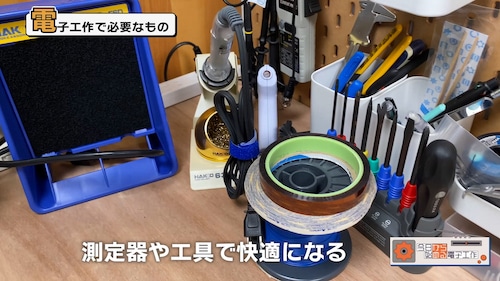
Knowledge required for electronics
Next, two pieces of knowledge required for electronics work are presented.
- programming
- Electricity Basics
The first is programming knowledge.
When looking at the flow of inputs, calculations, and outputs, the most important role is that of calculation.
And it is the process called programming that creates the content of the calculation.
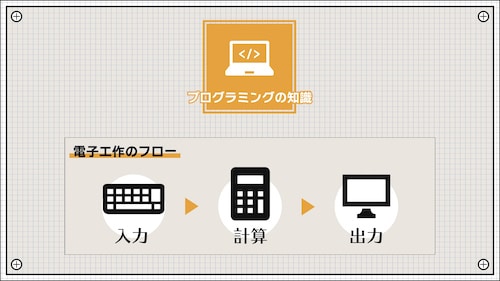
If you want to fully enjoy the world of electronic construction, you should still have a minimum level of programming knowledge.
Let’s start by blinking this LED called L-tika and gradually learn various programs.
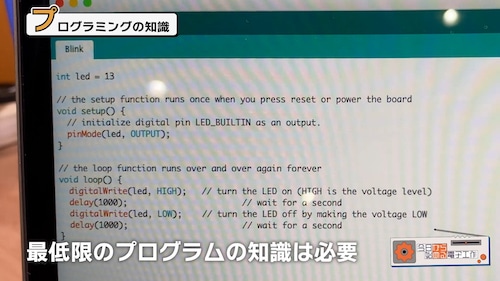
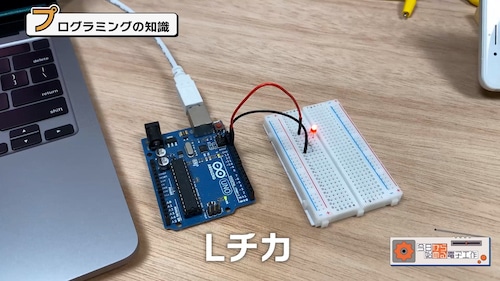
Next is basic knowledge about electricity. This has two purposes: to make things work properly and to use them safely.
- Make it work correctly
- Safe to use

For example, if you look at a single circuit for lighting an LED, you will not know the correct direction of the LED unless you have basic knowledge of electricity, and you may damage the LED or power supply by connecting it directly to the power supply without a resistor.

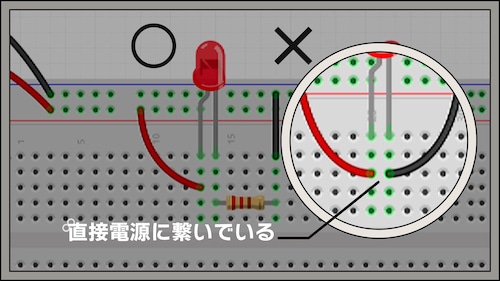
Although there is a wide range of electrical knowledge, we recommend that you start with Ohm’s law and basic circuit symbol reading.
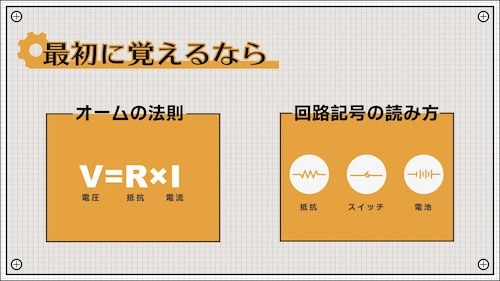
I will explain the basics of programming and electricity mentioned here in detail in another video. So, in this article, I have explained how to get started with electronics.
small needlepoint design
Finally, as a word of advice, I would like to talk about the first thing you should do after watching this video.
That is, in a nutshell, buy an introductory starter kit.
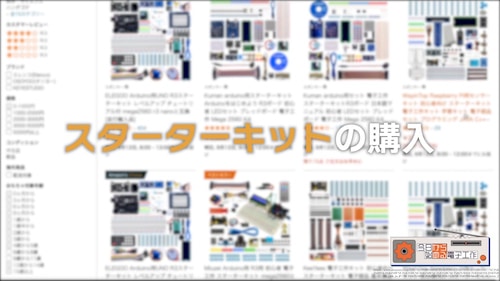
The starter kit contains many components equivalent to inputs, calculations, and outputs, and is also quite affordable.
Basically, many people are concerned about the fact that it is made in China, but the quality level is fine for a first trial, so there is no need to be too concerned.
In addition, we recommend this set from a manufacturer called ELEGOO.
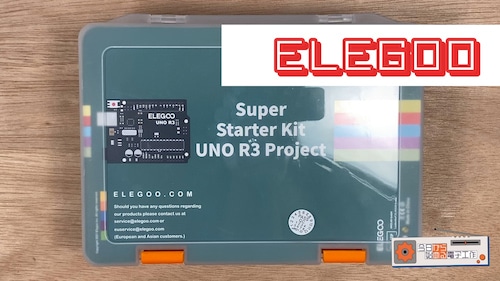
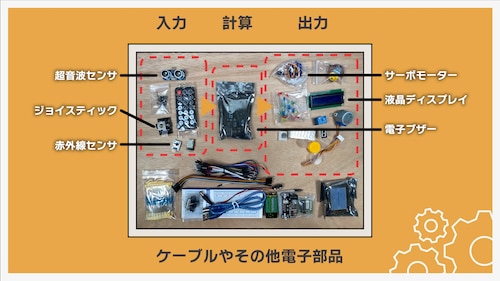
As shown here, the price is a reasonable 4,000 yen, which includes such devices for input, calculation, and output, respectively.
Having one of these kits will give you a boost of motivation, so if you are watching this video first, I recommend that you purchase it on Amazon right now.
summary
In this issue, we have compiled a list of how to get started with electronics work for those who are interested in electronics work but do not know where to start.

 Start electronics
Start electronics 